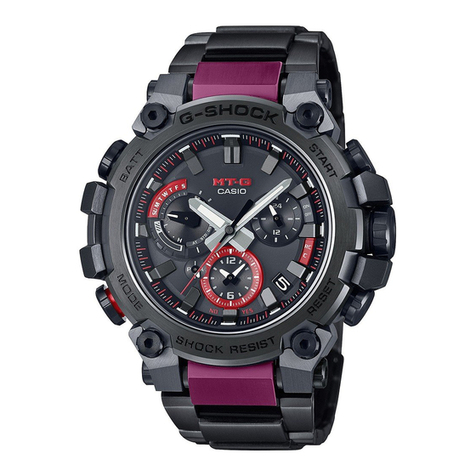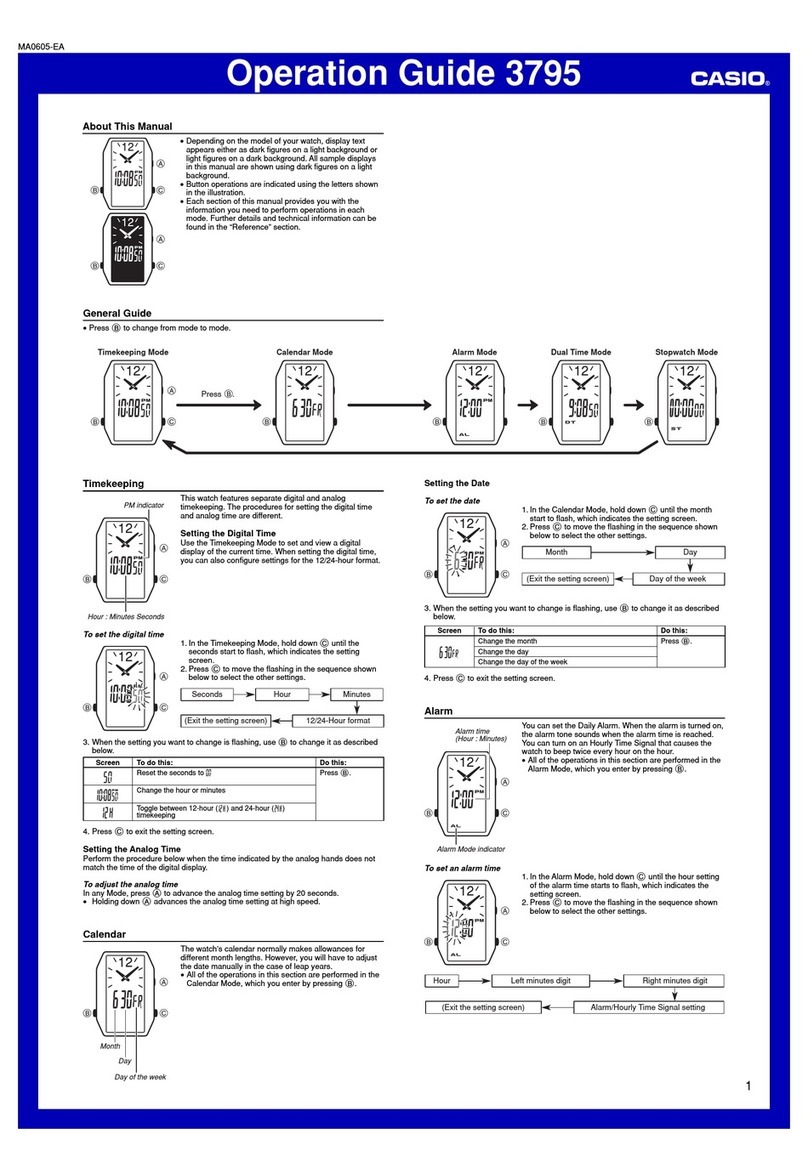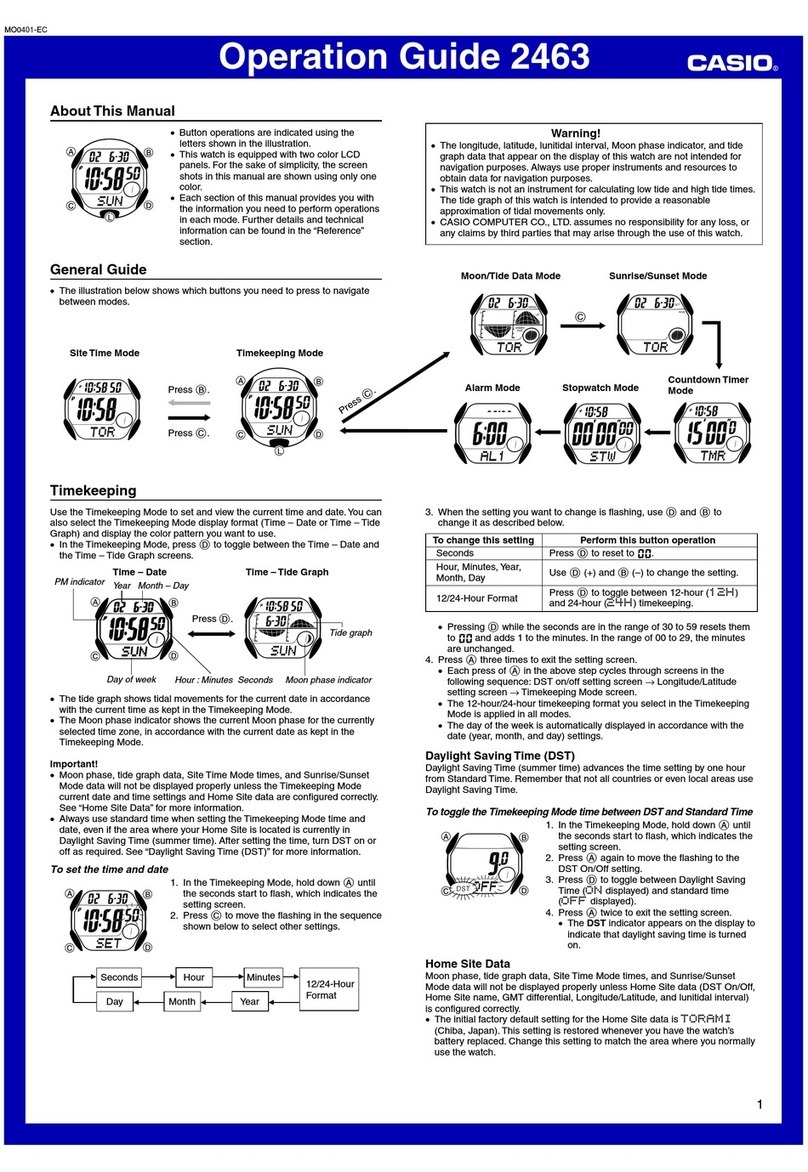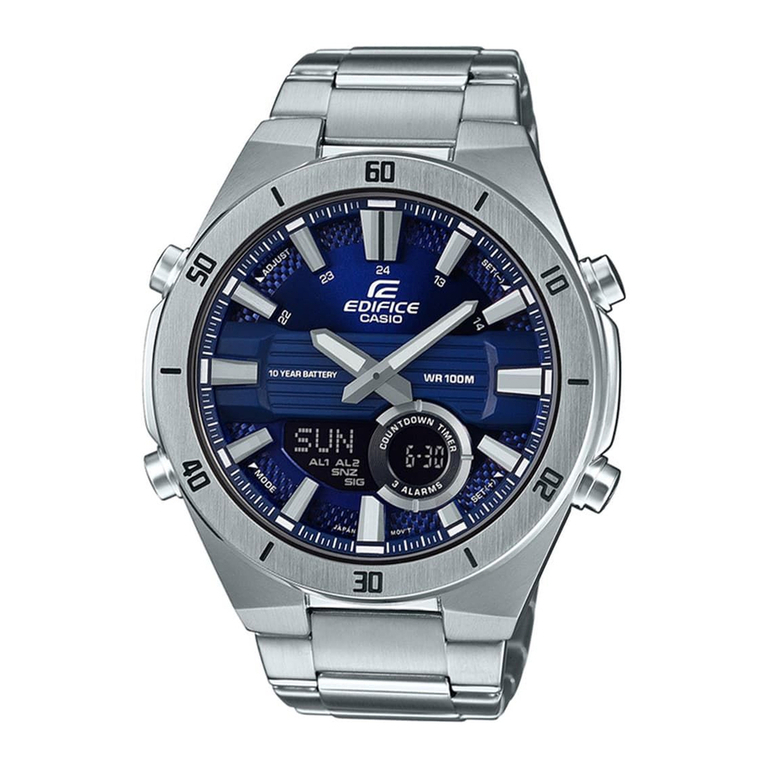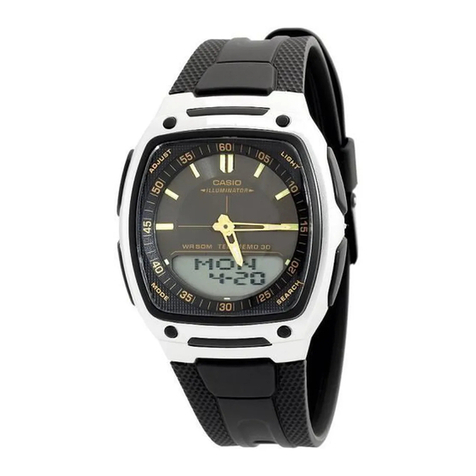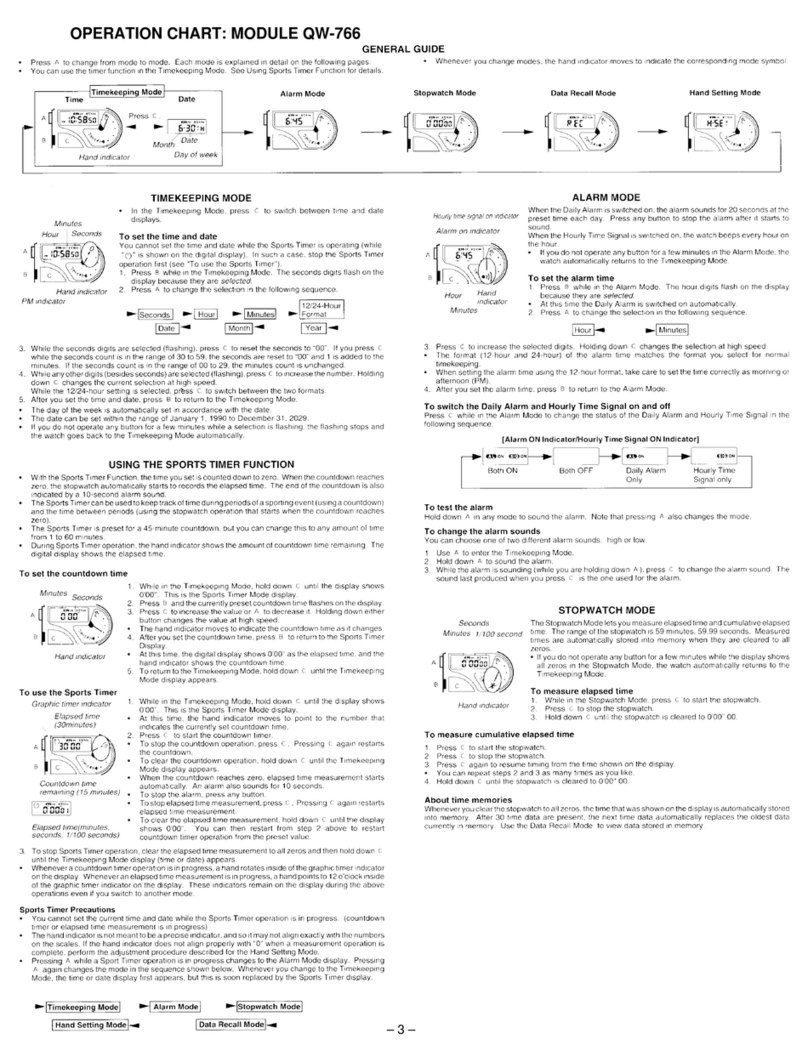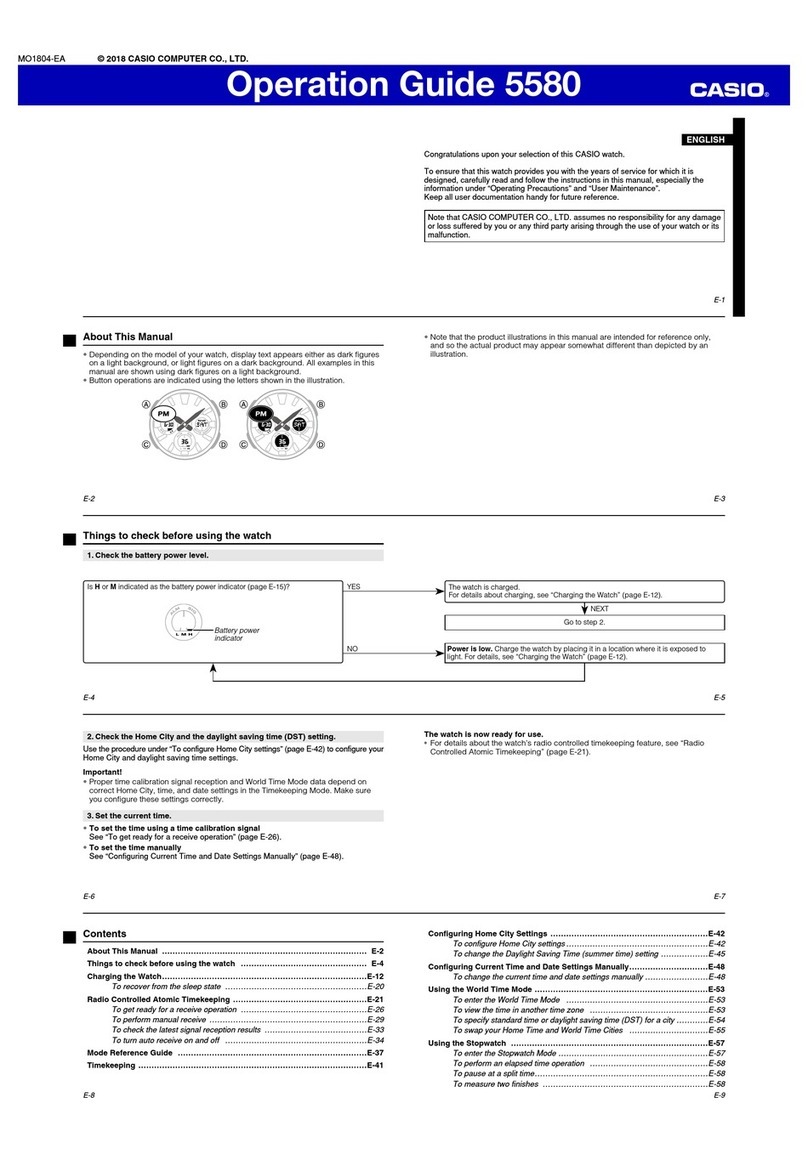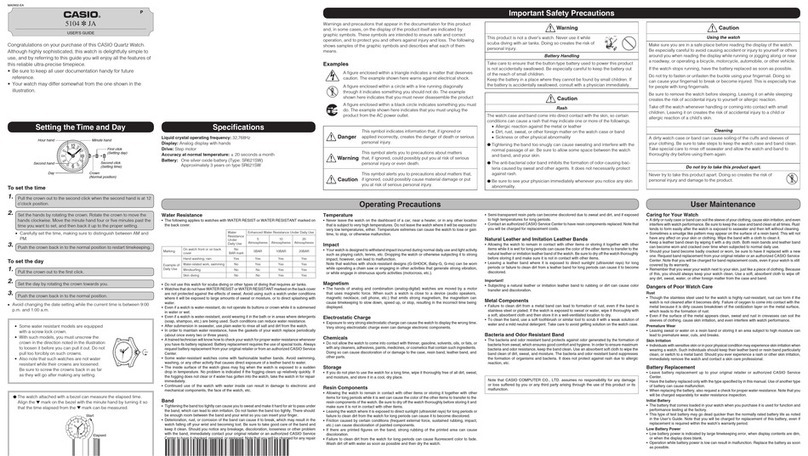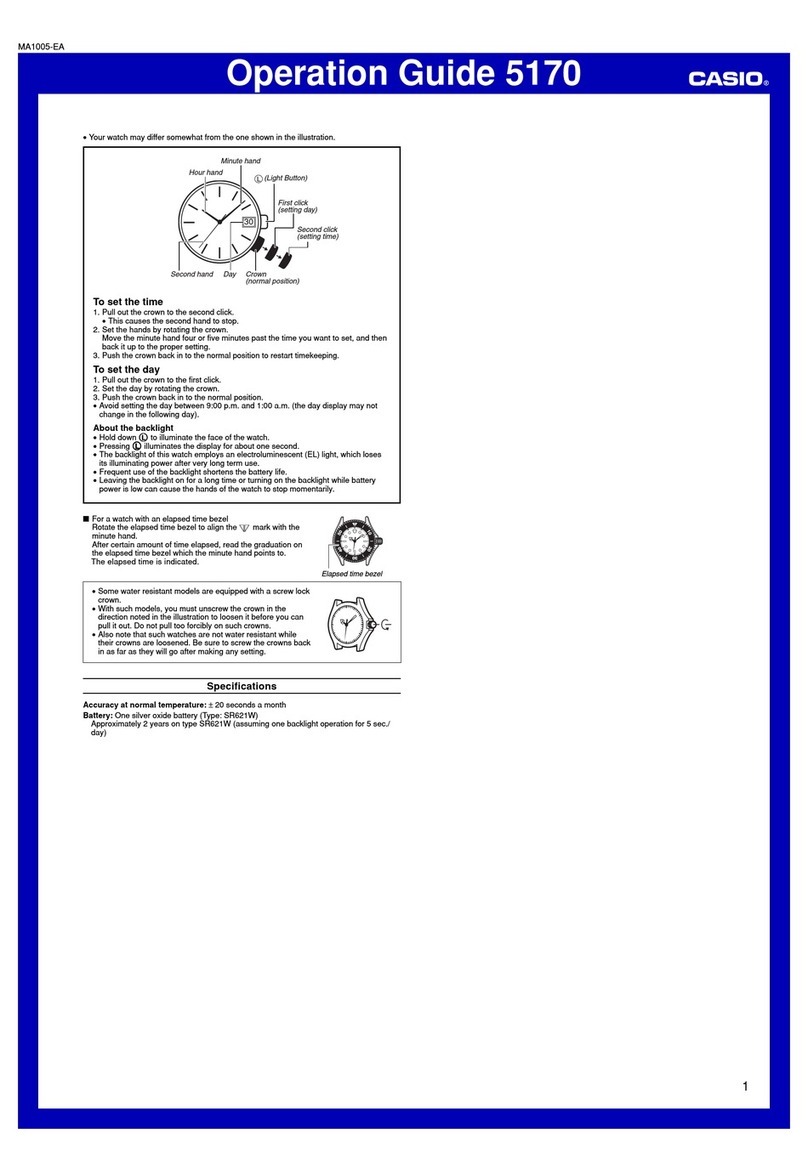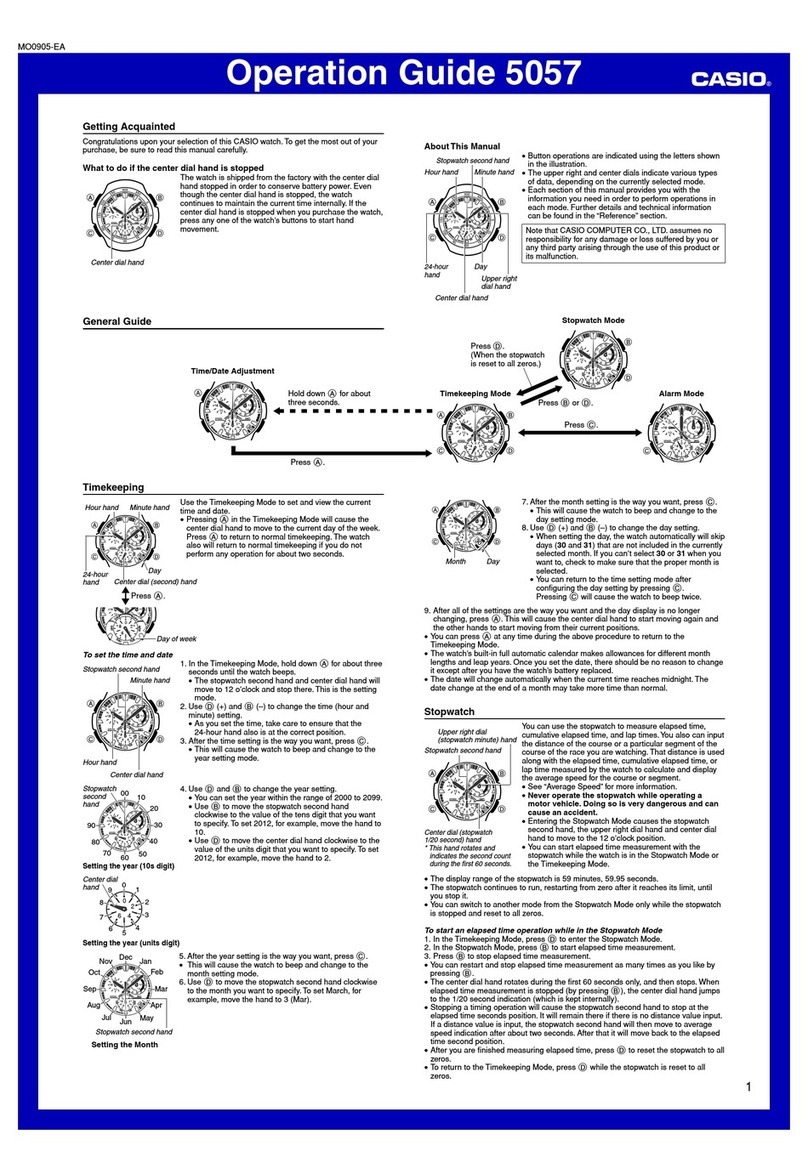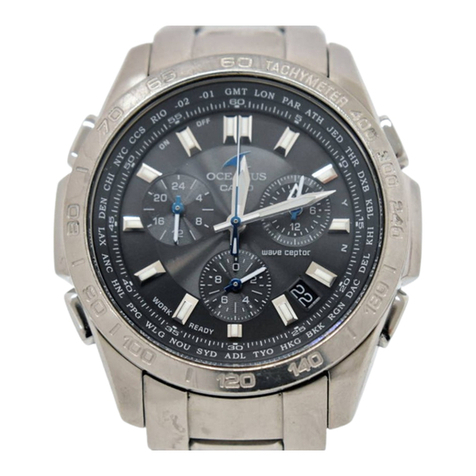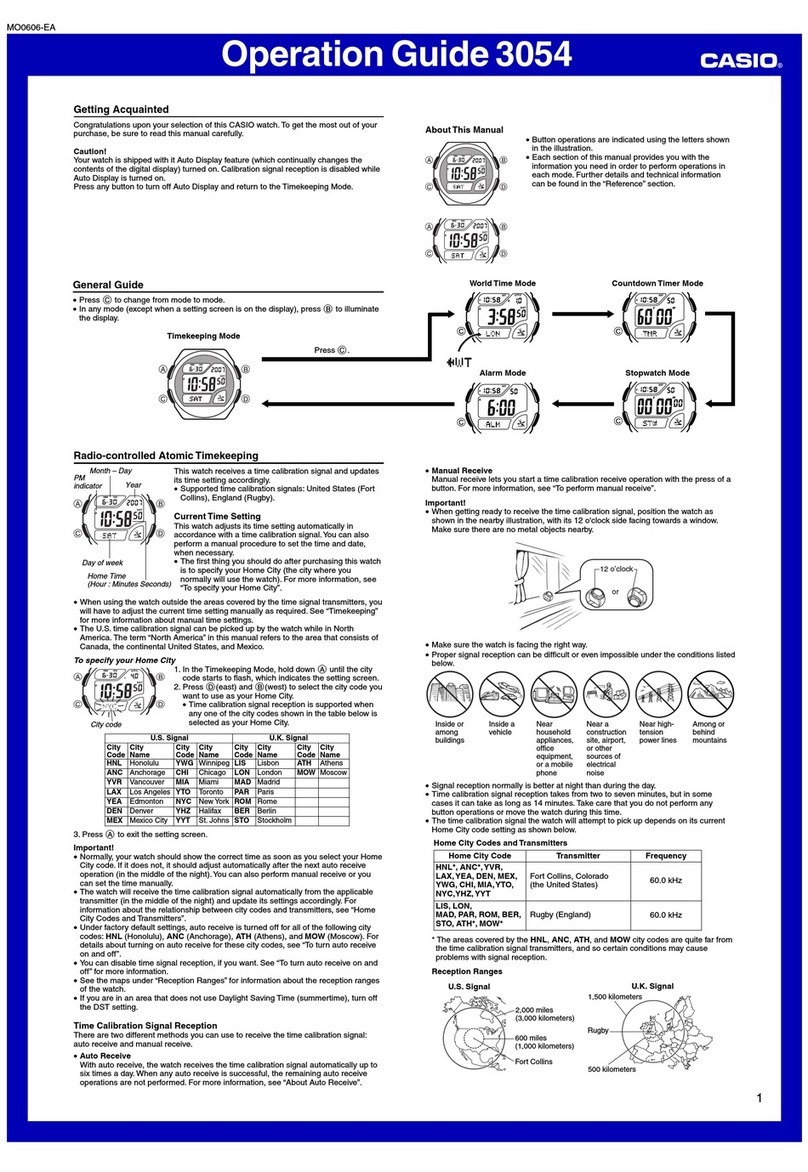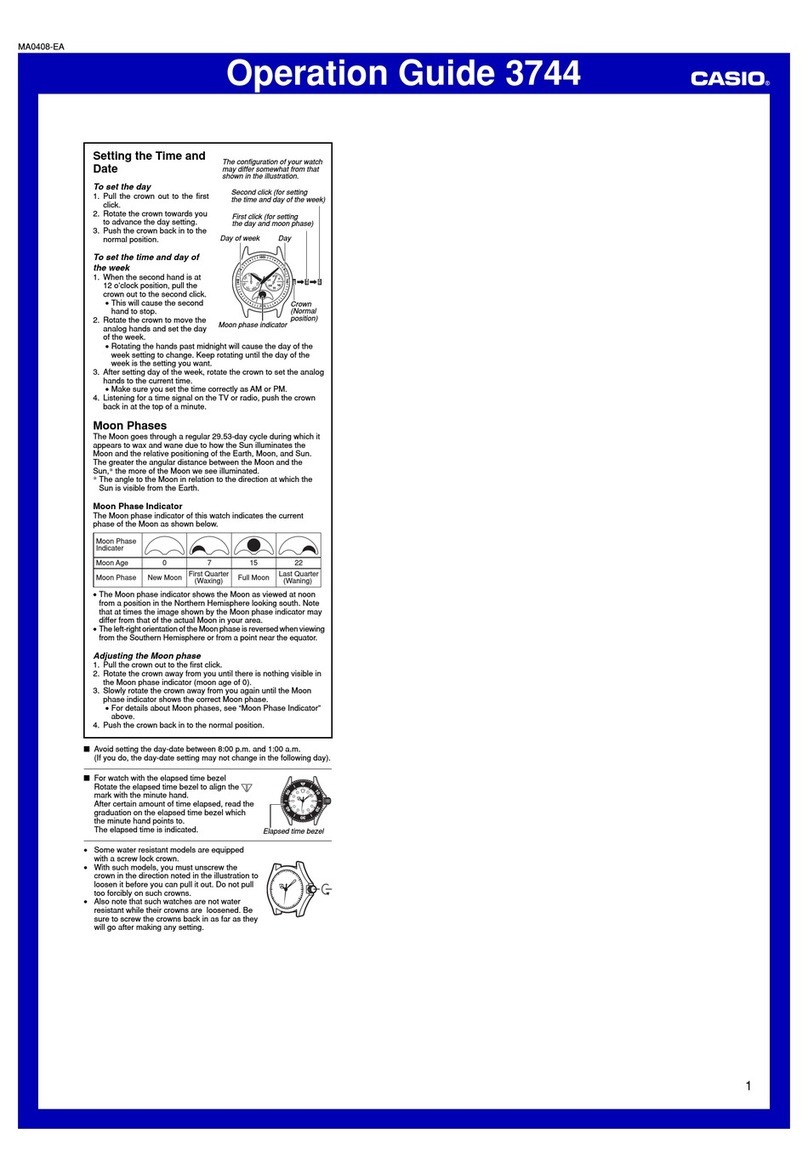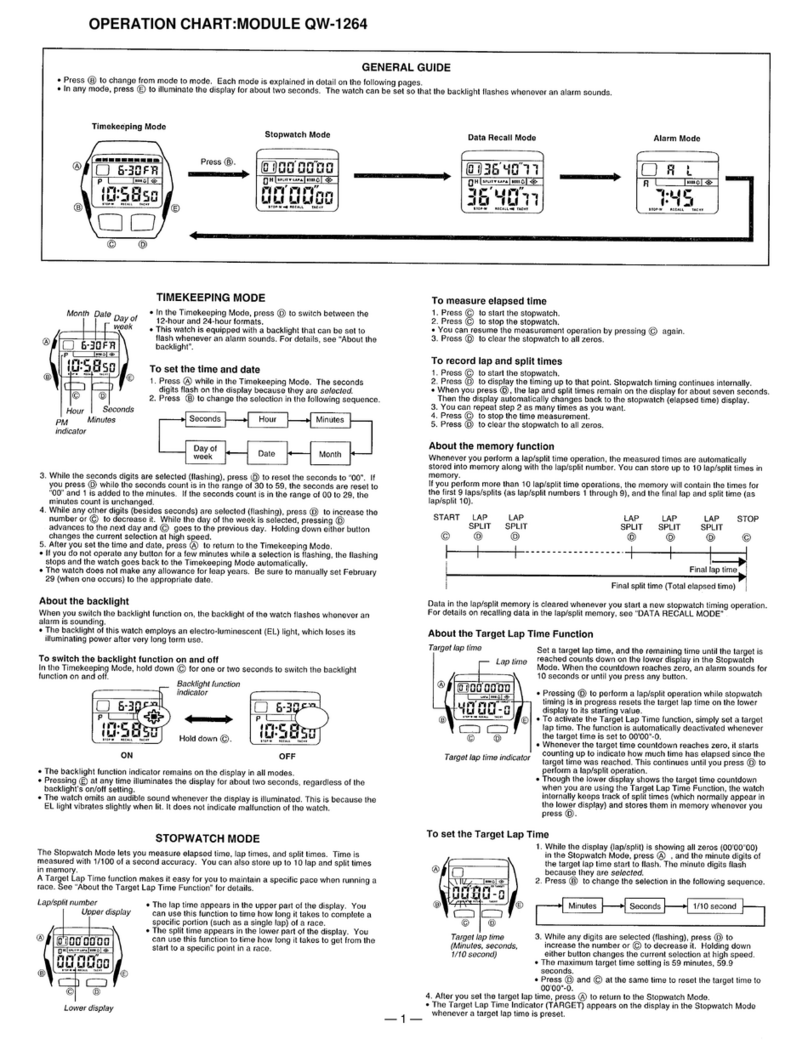
2376-3
•For details on the meanings of the data contained in each display, see the data
description table.
Memory Number Display Total Altitude Differential Maximum Ascent
Maximum DescentTotal AscentTotal Descent
To delete data from memory
1. In the Data Recall Mode, display the memory number of the data you want to
delete.
Important!
The delete operation erases the entire set of data you have selected. You cannot
delete parts of a set of data.
2. Holding down Auntil the memory number starts to flash.
3. To clear all of the data in the currently displayed set, holding down Cand D
simultaneously until the display shows “CLEAR”.
BAROMETER MODE
This watch uses a pressure sensor to measure
atmospheric pressure. In addition to readings taken for
the Barometric Activity Indicator, there is also a Barometer
Mode that you can use for measuring atmospheric
pressure. The readout from the pressure sensor can also
be switched between hecto-pascal/millibars (hPa/mb) and
inches/Hg (inHg). The barometer can be calibrated to
correct for measurement error.
•The unit “hPa/mb”or “inHg”flashes on the display while
the measurement operation is in progress.
•If you do not press any button for one hour in the
Barometer Mode, the display returns to the Timekeeping
Mode automatically.
Mode indicator
Atmospheric
pressure
Important!
The barometer that is built into this watch measures changes in atmospheric
pressure, which you can then apply to your own weather predictions. It is not intended
for use as a precision instrument in official weather prediction or reporting
applications.
How to interpret atmospheric readings
•Atmospheric pressure indicates changes in atmospheric conditions, and you can
predict weather with reasonable accuracy by monitoring these changes. Rising
atmosphere pressure indicates good weather, while falling pressure indicates
deteriorating weather conditions.
•The atmosphere pressure you see in the newspaper and on TV weather reports are
measurements that are corrected to 0 m sea level values.
Applications
•Measurement of atmosphere changes while hiking to predict coming weather.
•Prediction of weather for golf or other outdoor activities.
About the Barometer Mode measurement
As soon as you enter the Barometer Mode, measurements are taken every 3 seconds
for the first five minutes. After that, measurements are taken every minute. The
display unit for Barometer Mode measurements is 1 hPa/mb (or 0.05 inHg) and the
display range is 600 hPa/mb to 1,099 hPa/mb (or 17.70 inHg to 32.45 inHg).
•The display shows “FULL”if a measured value falls outside the range of 600
hPa/mb to 1,099 hPa/mb (or 17.70 inHg to 32.45 inHg). The normal display will
return as soon as the pressure returns within the allowable range.
Switching between hecto-pascal/millibar and inches/Hg
In the Barometer Mode, press Dto select either hecto-pascal/millibar (hPa/mb) and
inches/Hg (inHg).
Calibrating the Atmospheric Pressure Measurement
The sensor of this watch is calibrated at the factory before shipment and further
adjustment is normally not required. If noticeable error is found in the atmospheric
pressure readings produced by the watch, you can adjust it to correct the error.
Important!
Incorrectly adjusting the atmospheric pressure measurement of this watch can result
in incorrect readings. Compare the readings produced by the watch with those of
another reliable, accurate barometer.
To calibrate the barometer
1. In the Barometer Mode, hold down Auntil the
atmospheric pressure value should start flashing on the
display.
2. Each press of Dincreases the displayed atmospheric
pressure by 1 hPa/mb, while pressing Bdecreases it.
Holding down either button changes the value at high
speed.
•If you have selected inHg as your unit of
measurement, the above operations change the
reading by 0.05 inHg.
•Atmospheric pressure can be calibrated within the range of 600 hPa/mb to 1,099
hPa/mb (17.70 inHg to 32.45 inHg).
3. After calibrating the barometer, press Ato return to the Barometer Mode display.
•After you press A, the numbers on the display indicate that the watch is making
internal adjustments. This operation takes about nine seconds. Once adjustments
are finished, the Barometer Mode display appears.
STOPWATCH MODE
The Stopwatch Mode lets you measure elapsed time, split
times, and two finishes. The range of the stopwatch is 23
hours, 59 minutes, 59.99 seconds.
To change the measured time format
In the Stopwatch Mode, press Ato change the measure
time display format between minutes (00:00 00) and
hours (0:00 00).
Mode indicator
Press A.
Minutes
Seconds
1/100 second Hours
Minutes
Seconds
To measure elapsed time
1. Press Dto start the stopwatch.
2. Press Dto stop the stopwatch.
•You can resume the measurement operation by pressing Dagain.
3. Press Bto clear the stopwatch to all zeros.
To record split times
1. Press Dto start the stopwatch.
2. Press Bto display the timing up to that point. Stopwatch timing continues
internally.
3. Press Bto clear the split time and to continue time measurement on the display.
•You can repeat steps 2 and 3 as many times as you want.
4. Press Dto stop the time measurement.
5. Press Bto clear the stopwatch to all zeros.
To time first and second place finishes
1. Press Dto start the stopwatch.
2. Press Bwhen the first finisher crossed the line, and record the time.
3. Press Dwhen the second finisher cross the line.
4. Press Bto display the finishing time of the second finisher.
5. Press Bagain to clear the stopwatch to all zeros.
ALARM MODE
When the Daily Alarm is switched on, the alarm sounds
for 20 seconds at the preset time each day. Press any
button to stop the alarm after it starts to sound.
When the Hourly Time Signal is switched on, the watch
beeps every hour on the hour.
Note that the Daily Alarm and the Hourly Time Signal
operate based on the digital time setting.
To set the alarm time and switch the Hourly Time Signal on and off
1. Hold down Awhile in the Alarm Mode until the hour digits start to flash on the
display. The hour digits flash because they are
selected
. At this time the Daily Alarm
is switched on automatically.
Mode indicator
Hour Minutes
2. Press Cto change the selection in the following sequence.
Hour Minutes Hourly Time Signal Setting
3. Press Dto increase the selected hour or minutes digits or Bto decrease them.
Holding down either button changes the selection at high speed.
•The format (12-hour and 24-hour ) of the alarm time matches the format you
select for normal timekeeping.
•When setting the alarm time using the 12-hour format, take care to set the time
correctly as morning (am) or afternoon (pm).

